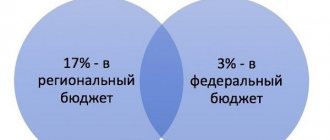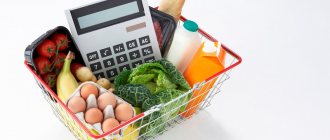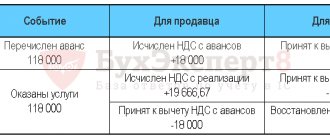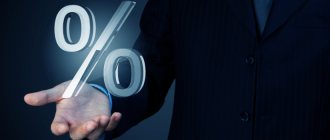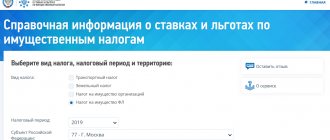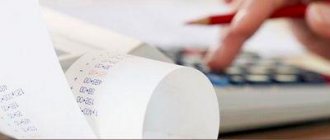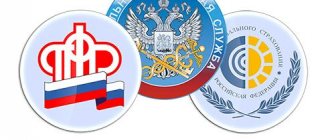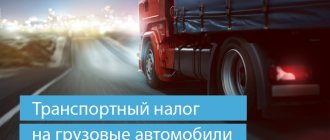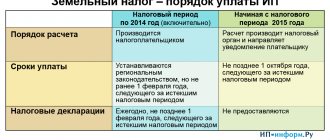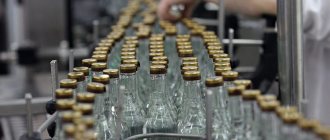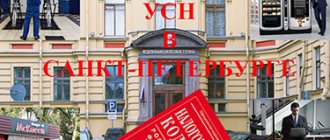After the President of the Russian Federation signed the law on the next amendment to the Tax Code, many articles of this document have undergone changes. In this material we will tell you how, after increasing the value added tax from 18 to 20%, the VAT rate on food products looks like in 2021.
In accordance with the requirements of the Tax Code for business entities, there are four categories of value added tax on food products, which differ from each other in the rates. This depends on whether the company is a manufacturer of products, or trades after purchase wholesale or retail.
VAT on food products at a rate of 10%
Food products subject to a VAT rate of 10% are included in a special list defined by subparagraph 1 of paragraph 2 of Article 164 of the Tax Code of the Russian Federation.
To confirm this rate, it is necessary that the name of the product is contained in the All-Russian Product Classifier (OKP) - for Russian products, or the Commodity Nomenclature of Foreign Economic Activity (TN VED) - for foreign ones (letter of the Ministry of Finance of Russia dated July 4, 2012 No. 03-07-08/167 ).
To confirm the 10% rate, you need to draw up a document that will certify that the product complies with all the conditions of technical regulations.
However, there are judicial precedents considering cases of refusal to confirm this rate (Resolutions of the Federal Antimonopoly Service of the North-Western District dated 02.28.2014 No. A56-9963/2013, FAS Moscow District dated 03.13.2008 No. KA-A40/1415-08).
The tax justification and the amount of tax calculated at a rate of 10% are indicated in line 020 (columns 3 and 5, respectively) of the VAT return (order of the Federal Tax Service of Russia dated October 29, 2014 No. ММВ-7-3 / [email protected] ).
Tea, coffee, VAT?
In the context of VAT, regulatory authorities consider the provision of food to personnel in one form or another as a free transfer of goods with all the consequences, but. Even from this point of view, the object of VAT taxation in this case does not always arise.
According to clause
1 tbsp. 146 of the Tax Code, the sale of goods on the territory of the Russian Federation is recognized as subject to VAT. Moreover, if, as a general rule, the sale of goods is understood as the transfer of ownership rights to them on a reimbursable basis (clause 1 of Article 39 of the Tax Code), then for the purposes of Ch. 21 of the Code there is a special procedure: the sale of goods, and therefore the object of VAT, includes their gratuitous transfer (clause 21 of the Code).
1 tbsp. 39, paragraph 1, art. 146 NK). As a matter of fact, specialists from the Russian Ministry of Finance also regard the free provision of food to workers as such.
VAT on food products at the rate of 18%
For other food products not included in the list of clause 2 of Article 164 of the Tax Code of the Russian Federation, a rate of 18% is assigned (clause 3 of Article 164 of the Tax Code of the Russian Federation). The same rate is assigned in circumstances where the supplier cannot document the right to set a 10% rate.
When drawing up a VAT return, the amounts received from the sale of food products at a rate of 18%, and the VAT itself, are reflected in section 3 (line 010, in columns 3 and 5).
Results
A taxpayer who is engaged in the production and sale of food products can apply the full variety of rates provided for by the Tax Code of the Russian Federation, as well as tax exemptions.
The choice of a specific rate or benefit is determined both by the specifics of the taxpayer’s activities and the type of products sold. But in order to take advantage of reduced rates or the right to exemption from VAT, the taxpayer must be prepared to document the rights to these actions. You can find more complete information on the topic in ConsultantPlus. Free trial access to the system for 2 days.
VAT exemption
According to the provisions of the Tax Code of the Russian Federation, an exemption from VAT is applied when food products are made or sold in food outlets of educational and medical organizations.
This act is enshrined in subparagraph 5 of paragraph 2 of Article 149 of the Tax Code of the Russian Federation. To confirm this fact, the responsible person must present evidence or certificates that authorize the provision of medical or educational services (letter of the Ministry of Finance of the Russian Federation dated December 3, 2014 No. 03-07-15/61906).
The price of food products exempt from VAT is determined by code 1010232, section 7 of the VAT return.
If the production or sale of food products is subject to the simplified taxation system (STS), then VAT is also not charged. This norm is enshrined in the provisions of paragraph 2 of Article 346.11 of the Tax Code of the Russian Federation.
It becomes invalid in circumstances where food products are supplied to the Russian Federation, or the organization using the simplified tax system is an agent.
If an organization operates within the framework of UTII, then, according to paragraph 4 of Article 346.26 of the Tax Code of the Russian Federation, it is exempt from VAT charges. However, in this case it is necessary to comply with the requirements of subparagraphs 6–9 of paragraph 2 of Article 346.26.
Sales of agricultural products purchased from the population
If an organization sells agricultural products or processed products purchased from the population, determine the VAT tax base as the difference between the market price and the purchase price of the specified products (clause 4 of Article 154 of the Tax Code of the Russian Federation).
In this case, two conditions must be met:
1. Agricultural products or their processed products must be purchased from citizens who are not entrepreneurs (letter of the Ministry of Finance of Russia dated December 7, 2006 No. 03-04-11/234).
2. Agricultural products and products of their processing must be included in the list approved by Decree of the Government of the Russian Federation of May 16, 2001 No. 383.
If both conditions are met, then calculate VAT on the sale of agricultural products as follows.
If sold agricultural products are subject to VAT at a rate of 18 percent, use the formula:
| VAT = Sales price – Purchase price × 18/118 |
If sold agricultural products are subject to VAT at a rate of 10 percent, use the formula:
| VAT = Sales price – Purchase price × 10/110 |
Such rules are established in paragraph 4 of Article 154 and paragraph 4 of Article 164 of the Tax Code of the Russian Federation.
If at least one of the conditions is not met, charge VAT in the usual manner - based on the full sale price (clause 1 of Article 154 of the Tax Code of the Russian Federation).
An example of reflecting in accounting the accrual of VAT on the sale of agricultural products purchased from the population
Torgovaya LLC retails food products. The store bought potatoes from a citizen who is not an entrepreneur for further resale. The purchase price of potatoes is 100,000 rubles. The store records goods at purchase prices.
The accountant reflected the receipt of potatoes as follows:
Debit 41 Credit 76 – 100,000 rub. – potatoes purchased from a citizen are capitalized;
Debit 76 Credit 50 – 100,000 rub. – money was paid to the citizen.
Revenue from the sale of potatoes amounted to 155,000 rubles. Potatoes are listed in the list of agricultural products approved by Decree of the Government of the Russian Federation of May 16, 2001 No. 383. When selling potatoes, a VAT rate of 10 percent is applied (subclause 1, clause 2, article 164 of the Tax Code of the Russian Federation). The amount of VAT accrued on the sale price of potatoes is equal to: (155,000 rubles – 100,000 rubles) × 10/110 = 5,000 rubles.
The Hermes accountant reflected the sale of potatoes to customers as follows:
Debit 50 Credit 90-1 – 155,000 rub. – receipts from customers for sold potatoes were received at the cash register;
Debit 90-3 Credit 68 subaccount “Calculations for VAT” – 5000 rubles. – VAT was charged on potatoes sold;
Debit 90-2 Credit 41 – 100,000 rub. – the cost of potatoes sold is written off.
If an organization purchases products simultaneously from both enterprises and the public, then in order to correctly determine the tax base for VAT, it is necessary to organize separate accounting of the purchased products. This can be done by opening additional sub-accounts to accounts 41 “Goods” and 90 “Sales”, which will separately reflect the cost of goods purchased from citizens and organizations.
An example of separate accounting of agricultural products purchased from citizens and organizations to determine the tax base for VAT
LLC "Torgovaya" capitalized 100 kg of bee honey, of which 50 kg was purchased from a citizen (not an entrepreneur) at a price of 50 rubles. per kilogram. The organization received the remaining 50 kg of honey from a wholesale organization at a price of 59 rubles. per kilogram (including VAT (18%) - 9 rubles). Accounting for goods in the store is carried out at purchase prices.
Hermes purchases products simultaneously from a wholesale organization and from citizens. Therefore, the Hermes accountant organized separate accounting of purchased goods.
Sub-accounts were opened for account 41:
- “Agricultural products purchased from organizations”;
- "Agricultural products purchased from the population."
To count 90:
- “Sale of goods purchased from organizations”;
- “Sale of agricultural products purchased from the population”;
- “Cost of goods purchased from organizations”;
- “Cost of agricultural products purchased from the population.”
The organization’s accountant reflected the receipt of honey as follows:
Debit 41 subaccount “Agricultural products purchased from organizations” Credit 60 – 2500 rub. (50 kg × (59 rub./kg – 9 rub./kg)) – honey received from a wholesale organization is capitalized;
Debit 19 Credit 60 – 450 rub. (50 kg × 9 rubles/kg) – input VAT on purchased honey is taken into account;
Debit 68 subaccount “Calculations for VAT” Credit 19 – 450 rub. – accepted for VAT deduction based on the seller’s invoice;
Debit 41 subaccount “Agricultural products purchased from the population” Credit 76 – 2500 rub. (50 kg × 50 rub./kg) – honey received from a citizen is capitalized;
Debit 60 Credit 51 – 2950 rub. (50 kg × 59 rub./kg) – payment to the wholesale organization is transferred;
Debit 76 Credit 50 – 2500 rub. – money was paid to the citizen.
All honey was sold at retail at a price of 68 rubles. per kilogram. Bee honey is included in the list of agricultural products approved by Decree of the Government of the Russian Federation of May 16, 2001 No. 383. When selling honey, a VAT rate of 18 percent is applied.
The accountant reflected the sale of honey as follows:
Debit 50 Credit 90-1 subaccount “Sale of goods purchased from organizations” - 3,400 rubles. (50 kg × 68 rub./kg) – revenue from the sale of honey purchased from a wholesale organization is reflected;
Debit 90-3 Credit 68 subaccount “VAT calculations” – 519 rubles. (RUB 3,400 × 18/118) – VAT is charged on proceeds from the sale of honey purchased from a wholesale organization;
Debit 90-2 subaccount “Cost of goods purchased from organizations” Credit 41 subaccount “Agricultural products purchased from organizations” - 2500 rubles. – the cost of sold honey purchased from a wholesale organization is written off;
Debit 50 Credit 90-1 subaccount “Sale of agricultural products purchased from the population” – 3,400 rubles. (50 kg × 68 rubles/kg) – revenue from the sale of honey purchased from a citizen is reflected;
Debit 90-3 Credit 68 subaccount “VAT calculations” – 137 rubles. ((3400 rub. – 2500 rub.) × 18/118) – VAT is charged on the difference between the sales price and the purchase price of honey purchased from a citizen;
Debit 90-2 subaccount “Cost of agricultural products purchased from the population” Credit 41 subaccount “Agricultural products purchased from the population” - 2500 rubles. – the cost of sold honey purchased from a citizen is written off.
Situation: is it possible to calculate VAT on the inter-price difference? The organization purchases agricultural products from the population and produces food products from them, which it then sells.
No you can not.
According to the Russian Ministry of Finance, the provisions of paragraph 4 of Article 154 of the Tax Code of the Russian Federation apply only to organizations that resell agricultural products purchased from the population (products of their primary processing) unchanged. The list of such agricultural products was approved by Decree of the Government of the Russian Federation of May 16, 2001 No. 383.
Moreover, if an organization sells agricultural products that were primarily processed by citizens, then it has the right to take advantage of preferential tax treatment only if the list names not only specific types of agricultural products (for example, tea leaves or ferns), but also the possible results of its primary processing (for example , semi-finished leather products or leather processing products). If an organization buys agricultural products mentioned in the list (primary processed products) from the population, then further processes them and then sells finished products (for example, sausages or semi-finished meat products), then it does not have the right to take advantage of the preferential rate. This organization must charge VAT on the entire amount of revenue (clause 1 of Article 154 of the Tax Code of the Russian Federation).
Such clarifications are contained in letters of the Ministry of Finance of Russia dated January 26, 2005 No. 03-04-04/01, dated April 27, 2002 No. 04-03-11/17. This point of view is supported by some arbitration courts (see, for example, the resolution of the Federal Antimonopoly Service of the Central District of October 8, 2008 No. A36-528/2008).
Advice: there are arguments that allow organizations to calculate VAT on the inter-price difference when selling processed agricultural products purchased from the population. They are as follows.
The condition for determining the tax base under paragraph 4 of Article 154 of the Tax Code of the Russian Federation is the purchase of agricultural products from citizens who are not VAT payers. Therefore, the procedure for calculating the VAT tax base established by this paragraph is applicable both when selling agricultural products themselves and when selling the results of their processing. Thus, an organization that sells goods made from agricultural products purchased from citizens (products of their primary processing) has the right to charge VAT on the difference between revenue and expenses for the purchase of agricultural products.
Some arbitration courts adhere to this position (see, for example, decisions of the FAS Volga District dated September 19, 2007 No. A65-3704/2006, North Caucasus District dated January 16, 2007 No. F08-6441/2006, Central District dated 9 February 2004 No. A48-2429/03-13).
In addition, in the resolutions of the Federal Antimonopoly Service of the Volga Region dated November 30, 2004 No. A55-4479/2004-31, dated October 12, 2004 No. A12-5452/04-C25, special emphasis was placed on the ambiguity of the legal norm contained in paragraph 4 of the article 154 of the Tax Code of the Russian Federation. According to the judges, it does not follow from the content of this paragraph that the procedure established in it applies only to operations for the sale of agricultural products purchased from citizens, without further processing. And since the list approved by Decree of the Government of the Russian Federation of May 16, 2001 No. 383 is not exhaustive, it cannot be concluded from it that it does not apply to finished products.
Application of 0% rate
When food products are sold abroad, it is possible to set a rate (clause 1 of Article 164 of the Tax Code of the Russian Federation). To confirm this fact, after 180 days from the time of customs registration, you must present the following documents:
- copies of agreements with counterparties;
- copies of accompanying or transport invoices;
- a copy of the customs certificate.
If copies of shipping or transport invoices, as well as customs certificates are not available in paper form, then from October 1, 2015, you can provide their registers, including in electronic format (clause 15 of Article 165 of the Tax Code of the Russian Federation, clause 10 of Article 1 of Law dated December 29, 2014 No. 452- Federal Law “On Amendments to Article 165 of the Tax Code of the Russian Federation”).
, section 4 must be completed in the VAT report
If the deadline for providing the mandatory package of papers is delayed, VAT is established at a rate of 18%. When preparing a VAT return with Section 6 completed, a rate of 10% may be assigned.
A preliminary agreement for the purchase and sale of a house and a plot of land is intended to formalize the agreement on paper. Are you planning to buy a house with land with a mortgage? You will find a description of the programs of banks that offer this service here.
When can they refuse to provide a land plot? We talked about this in detail in our article.
Pros and cons of VAT for Unified Agricultural Tax
The state continues to support agricultural producers, especially now when the task of import substitution of goods subject to sanctions has been set. And no matter how strange it may sound, the obligation to pay a new tax can, in some cases, reduce the overall fiscal burden.
The opportunity to become a VAT payer without giving up the preferential treatment is primarily beneficial to large farmers who purchase expensive machinery and equipment. Well, small organizations and individual entrepreneurs can be freed from such obligations.
The main advantage of paying value added tax is the ability to take into account input VAT, because many counterparties of agricultural producers operate on a common taxation system. In addition, Unified Agricultural Tax payers now have the right to issue invoices with a designated VAT amount, which will attract large organizations to cooperate with them.
The disadvantages of combining Unified Agricultural Tax and VAT include the obligation to prepare additional reporting (invoices, books of purchases and sales, declarations) and payment of the tax itself.
We recommend that our users make a decision on paying or refusing VAT on the Unified Agricultural Tax after consultation with specialists. Here you really need to take into account many nuances that can significantly affect the development of your business. In particular, after exemption from VAT, a tax deduction cannot be obtained, but these amounts are no longer included in expenses.
Free tax consultation
Table of products with different VAT rates
What are the VAT rates for various goods and food products? The table below will help you navigate easily.
| 10% | 18% |
| Corn | Apples and other fruits and berries |
| Juices (for baby food) and other products for children | Honey |
| Vegetable oil | Cookies and other confectionery products |
| Chicken and other poultry meat | Caviar |
| Vegetables | Chicken skin |
| Sugar | Mayonnaise and other sauces |
| Products intended for diabetics | Trout and other types of gourmet fish (salmon, sturgeon) |
| Salt | Meat and bone meal |
| Eggs | Cattle skin |
| Milk products | Pickles and other processed vegetable products |
What is the procedure for paying VAT on tea, coffee, sugar, cookies in the office?
Important November 28, 2021 14:31 LLC "" A very large number of organizations purchase tea, coffee, sugar and cookies for office employees and clients. This is often justified as one of the ways to make a positive impression on clients, partners, and potential employees for further productive cooperation. And also to increase employee loyalty.
Those. to some extent this is also necessary for production purposes. In this regard, accountants are often asked the question: is it possible to deduct VAT on such products? In turn, the sale of goods is recognized as: - transfer of ownership of goods (by one person to another person)
